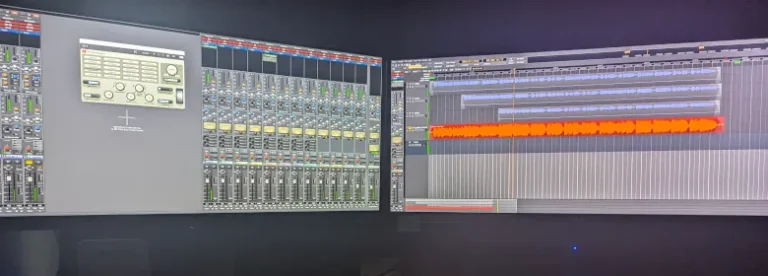I finally found the best Linux distribution for my optimus laptop which lets me configure my external monitor which ease. Laptops are good but when not on the move, the small screen is simply not practical. To make me more productive, I connect my old MSI laptop which I bought back in 2013 to an external 32″ 4K monitor via the mini display port.
After adding the Nvidia repository to YaST and installing the correct drivers for my K2000m GFX card, I enable the external 4K monitor with this command:
sudo prime-select nvidia
OpenSuse Leap
I use my laptop mostly for managing emails and web design. Over the years, various Linux distros were installed and worked quite well. About a year ago, the Nvidia drivers changed how they saw optimus-based laptops and because of that, installing Linux became challenging.
What does “Optimus based laptop” mean?
Powerful graphics cards drain the battery fast. To fix this, laptop manufacturers implemented a way for non demanding software to use the on-board Intel graphics chip and so Optimus was born.
If you are a long-time Linux user then you’ll surely remember Dr. Linus Torvalds’s one-finger Nvidia salute which about sums it up.

At first I run Manjaro which worked nicely. Manjaro is a good distribution for an optimus laptop but to make it work, I have to sacrifice the laptop display. I didn’t mind because next to the 32″ screen, it seemed useless. But not all was well. For example, shutting down the laptop had to be done via the terminal or it would sometimes just reboot or not completely shut down. In case you wonder, shutting down via the terminal is based on this command:
sudo shutdown -h now
Rebooting is similar: sudo shutdown -r now
What originally stopped me from trying OpenSUSE was the huge 4.x Gig ISO download but over the years, I have adapted to installing leaner versions so the net install option was perfect. Please understand that you need a fast internet connection in order to net install of OpenSUSE as it will download 2 – 3 Gigabytes or more of data during the install. The advantage of doing this is worth it because once the installation is finished, the system is up-to-date …. for a few days.
Installing Nvidia drivers
Right after installing, OpenSUSE defaults to the opensource graphics drivers which are OK but not ideal for large monitors. Moving many windows around is not as smooth as when the proprietary drivers are installed. Luckily, it takes all but a minute to add the Nvidia repository to YAST2 and then the “correct Nvidia drivers” can be selected and installed.
If you try OpenSUSE then please make sure that you first identify your graphics card so that you can select the correct drivers. My 8-year-old laptop uses the 390-series drivers which work amazingly well.
Here is how I got the external 4K monitor working
Right after the first reboot, I opened YaST and added the Nvidia repository as shown in the image below:

After that, I’ve installed the drivers and rebooted. So far, so good but one last step is needed to get an optimus-based laptop to use the proprietary drivers to power the external monitor. Here is the command line magic:
sudo prime-select nvidia
Upon entering my password and pressing enter, the 4K monitor displayed the extended desktop and all I had to do is making it the primary display. Using XFCE, that is as simple as going to Settings > Display and configure the desired layout.
I was motivated to write this blog post based on the fact the for one straight month, OpenSUSE has not failed me once. Sure, I don’t get the latest software packages with Leap 15.2 but that is not what I am after. For the latest and greatest I could use Tumbleweed or Arch Linux.
If you’ve read this far then know that OpenSUSE is an amazing Linux distribution, a true work horse. It extends the life of older hardware and thanks to talented and creative artists, even old machines can look like Apple’s Big Sur or what ever comes after that. Best of all, if you bought a capable laptop in the past then Linux, especially OpenSUSE, can restore the speed and snappiness it once had.
Thank you for reading this article. Please know that OpenSUSE comes with plenty of well-written tutorials that cover everything I just mentioned plus much more. If you have questions then leave a comment and I will do my best to help or point you in the right direction.

I’ve tried openSUSE Leap and TW for Optimus. The Nvidia drivers will install but graphics switching never seems to be very fluid. What’s your experience with this?
Out of all distros I’ve installed on my MSI laptop (Nvidia K2000m chip), OpenSUSE was the best when it came to getting the external monitor up and running.
Manjaro would only let me pick one (monitor) or the other which meant that the laptop display was always dark. I didn’t mind it but once I installed OpenSUSE, both displays worked flawlessly.